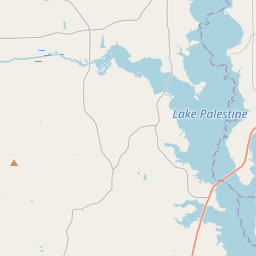Neches Saline, C. S. A.
Historical marker location:






Now covered by the waters of Lake Palestine, the Neches Saline was the source of salt for early settlers from over a wide area of East Texas. As early as 1765, the Spanish missionary Calahorra recorded the presence of salines in the area.
An early manufacturing process for extracting salt from the saline involved drawing water from shallow wells and boiling it to the evaporation point, leaving the salt behind. The possibilities for commercial development of the Neches Saline became evident to the early settlers, and a small isolated settlement developed here before the Texas revolution.
Local salt making declined throughout the South between 1850 and 1861 as salt began to be imported from England. With the Federal embargo during the Civil War, salt began to be made locally again. It was reported that James S. O. Brooks, who had come to Texas from West Virginia, had twelve furnaces operating at the Neches Saline during the war and manufactured 100 bushels of salt per day to meet the needs of the Confederacy. Brooks leased the salt works to his son, William Bradford, in 1865. W. B. Brooks, who purchased the operation in 1871, apparently was the last owner and operator of the salt works at the Neches Saline
As one of the most visible programs of the Texas Historical Commission (THC), historical markers commemorate diverse topics in Texas history, including: the history and architecture of houses, commercial and public buildings, religious congregations, and military sites; events that changed the course of local and state history; and individuals who have made lasting contributions to the state, community organizations, and businesses.
Texas is known for its love of football, and the state has produced many great football players, including legends like Tom Landry, Earl Campbell, and Vince Young.
During the turbulent times of the American Civil War, Smith County experienced significant unrest. Many residents in the county owned slaves, and tensions ran high between Union and Confederate sympathizers. The Battle of Blackjack Grove took place in August 1864, and although it was a minor skirmish, it reflected the deep divisions and struggles faced by the county during the war.
Following the war, Smith County experienced rapid growth and development. The arrival of the railroad in the late 19th century further boosted the county's economy and population. During this period, the town of Tyler established itself as a principal commercial center, attracting businesses and settlers from surrounding areas.
In the 20th century, Smith County continued to thrive with the growth of agriculture, oil, and manufacturing industries. Tyler became known as the "Rose Capital of the World" due to its substantial rose-growing industry. The county has also been a center for education, with the establishment of schools and universities.
Today, Smith County remains a vibrant and dynamic part of Texas. Its rich history, from its Native American roots to its role in the Civil War and beyond, provides a fascinating backdrop to its current achievements and endeavors.
Smith County Timeline
This timeline provides a concise overview of the key events in the history of Smith County, Texas.
- 1846 - Smith County is established by the Texas legislature.
- 1847 - The county seat is designated at Tyler.
- 1850 - The population of Smith County reaches 1,726.
- 1861-1865 - The Civil War impacts the county, with many residents serving in the Confederate Army.
- 1877 - The Texas and Pacific Railway reaches Tyler, boosting the local economy.
- 1930s - The Great Depression brings economic hardships to Smith County.
- 1932 - The East Texas Oil Field is discovered, leading to an oil boom in the area.
- 1950s - The construction of highways and infrastructure brings further growth and development to the county.
- 1995 - The Smith County Historical Society is formed to preserve the county's history.
- Present - Smith County continues to thrive as a regional economic and cultural hub in East Texas.